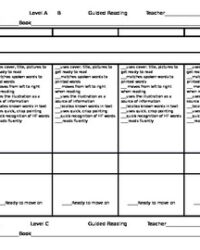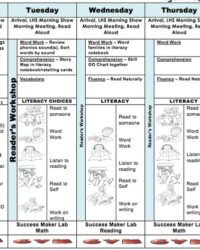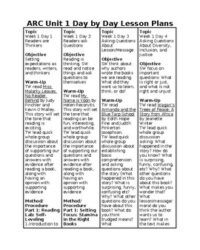Embarking on the journey of literacy instruction can often feel like navigating a complex maze. As educators, we constantly seek innovative yet practical frameworks to foster independent learning and a love for reading and writing in our students. One such highly effective and widely adopted approach is the Daily Five, a structure that empowers students to make choices about their learning while teachers work with small groups or individual students. It’s more than just a set of activities; it’s a comprehensive system designed to build independence, stamina, and deep understanding in literacy.
The beauty of the Daily Five lies in its flexibility and its focus on student agency. Instead of a rigid curriculum, it provides a framework for managing a literacy block, allowing students to engage in meaningful, self-directed practice. This structure includes five key components: Read to Self, Work on Writing, Read to Someone, Listen to Reading, and Word Work. Each component is designed to develop specific literacy skills, and when implemented thoughtfully, they create a dynamic learning environment where every minute is purposeful. But how do you effectively plan for such a dynamic system? That’s where a well-crafted lesson plan becomes invaluable.
Understanding the Core Principles of the Daily Five for Effective Planning
Before diving into the specifics of creating a Daily Five lesson plan, it’s crucial to grasp the foundational principles that make this framework so powerful. At its heart, the Daily Five promotes independence and choice, building student stamina for sustained literacy work. It’s not about keeping students busy; it’s about teaching them how to be productive and engaged learners. This involves explicit instruction on each of the five components, teaching students how to select appropriate materials, how to work effectively, and how to troubleshoot common issues independently. When students understand the “why” and “how” behind each choice, they become invested in their own learning journey.
Another critical principle is the idea of “stamina building.” Just like an athlete trains to run a marathon, students need to gradually build their capacity for independent work. This begins with short, focused practice sessions that incrementally increase in length. Teachers model the desired behaviors, and students practice them, receiving feedback and refining their skills. This careful cultivation of stamina ensures that by the time a full Daily Five block is in place, students are genuinely capable of sustained, high-quality independent work, freeing the teacher to provide targeted small-group instruction or individual conferences.
The Daily Five also emphasizes the importance of differentiation. Because students are working independently or in small groups, the teacher has the opportunity to tailor instruction to meet diverse needs. Whether it’s guiding a reading group through a challenging text, providing one-on-one writing support, or introducing new word work strategies, the structure allows for highly personalized learning experiences. This responsive teaching is a hallmark of effective literacy instruction and is seamlessly integrated into the Daily Five model. It’s about meeting each student where they are and guiding them forward.
Finally, community and accountability play a significant role. Students learn to rely on each other, support one another, and hold themselves responsible for their learning choices. The teacher facilitates this by fostering a positive classroom culture where mistakes are seen as learning opportunities and effort is celebrated. Regular check-ins, brief share-outs, and clear expectations contribute to a sense of shared purpose within the literacy block. It’s this blend of independence, tailored instruction, and a supportive community that makes the Daily Five such a transformative approach to literacy teaching and learning.
Designing Your Daily Five Lesson Plan Elements
- Explicit Mini-Lesson: This is your whole-group teaching moment, focusing on a specific literacy skill or strategy that students will then apply during their independent work.
- Choice Time: Students select from the five components, applying the skills learned in the mini-lesson. This is where a good daily five lesson plan template really shines, helping you track choices.
- Conferring and Small Group Work: While students are engaged in choice time, the teacher works with individuals or small groups, providing targeted instruction based on assessment data.
- Debrief: A brief whole-group share-out at the end, where students reflect on their learning, share successes, and discuss challenges.
Incorporating Assessment and Reflection
Assessment in the Daily Five isn’t just about formal tests; it’s an ongoing process. Teachers continuously observe students during choice time, take anecdotal notes, and use these observations to inform future mini-lessons and small-group instruction. Reflection, both by the teacher and the students, is equally vital. What went well today? What challenges arose? How can we improve our independent work or our group interactions tomorrow? These questions drive continuous improvement and ensure the Daily Five remains a dynamic and effective system.
Building Your Personalized Daily Five Lesson Plan Template
Creating your own daily five lesson plan template doesn’t have to be daunting. Think of it as a blueprint that guides your daily literacy block, ensuring you cover all essential elements while maintaining flexibility. A solid template helps you organize your mini-lessons, anticipate student needs for small group work, and plan for purposeful independent practice. It’s a tool that brings clarity to your instructional goals and streamlines your preparation time, allowing you to focus more on teaching and less on planning logistics.
Your personalized template should include sections for your daily mini-lesson, specifying the learning objective, materials needed, and the steps of the lesson. It should also have a clear space for outlining your small group focus for the day, detailing which students you plan to work with and what specific skills or strategies you will address. This ensures that your small group instruction is intentional and directly responsive to student data, rather than being an afterthought. Consider incorporating a section for specific teaching points related to each of the five components.
Furthermore, a comprehensive template will also account for the debriefing portion of your literacy block, prompting you to think about what students will share and what key takeaways you want to reinforce. Remember, the goal of a daily five lesson plan template is to provide structure without stifling the organic flow of student-led learning. It’s about setting yourself up for success so you can truly observe, guide, and nurture your students’ literacy growth. Tailor it to fit your classroom’s unique rhythm and your students’ evolving needs.
- Date and Lesson Title: Helps organize and track your instructional progression.
- Mini-Lesson Focus: Clearly state the learning objective and skill being taught.
- Materials Needed: List all resources for the mini-lesson and independent work.
- Small Group/Conferring Plan: Detail student groups, objectives, and planned activities.
- Independent Work Expectations: Briefly note what students will focus on in each of the Daily Five components.
- Assessment Notes: Space for quick observations or anecdotal records during the block.
- Reflection: A section for personal notes on what went well and what to adjust for the next day.
Implementing the Daily Five in your classroom can truly revolutionize your literacy block, fostering a vibrant environment where students take ownership of their learning. It moves beyond rote tasks, cultivating genuine engagement and building essential skills for lifelong readers and writers. By utilizing a thoughtful lesson plan, you empower yourself to deliver targeted instruction, manage your classroom effectively, and ultimately, cultivate a classroom of independent and enthusiastic learners.
Embracing this framework means creating a consistent, predictable routine that allows both you and your students to thrive. With a robust daily five lesson plan template guiding your instruction, you’ll find more time for individualized support and deeper student engagement, transforming your literacy teaching from simply delivering content to truly nurturing a community of capable and confident learners ready to tackle any text or writing task that comes their way.


